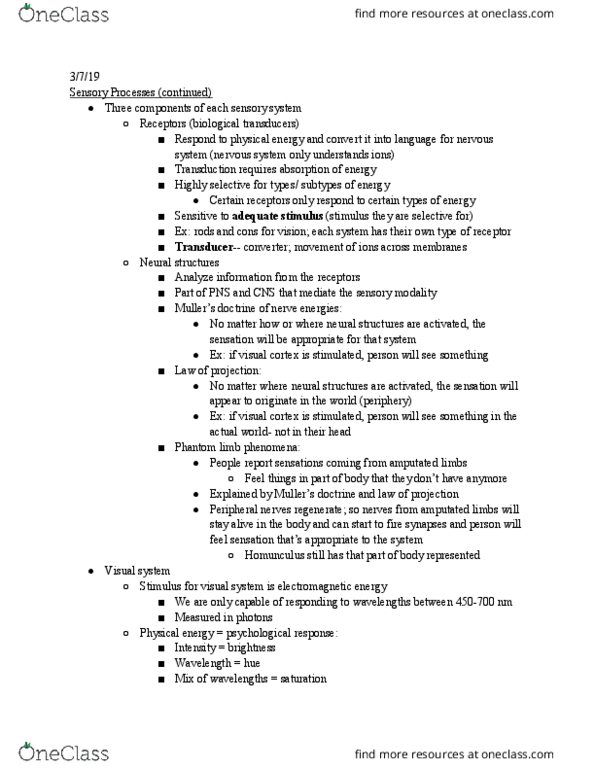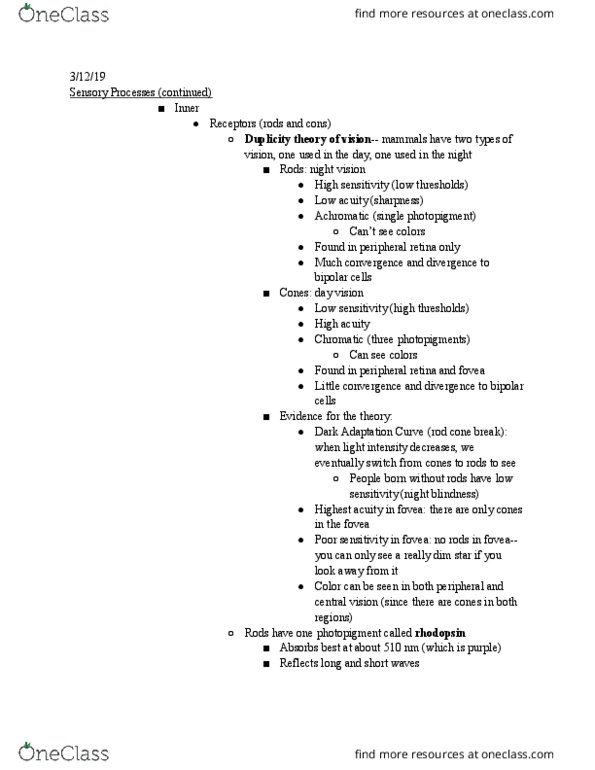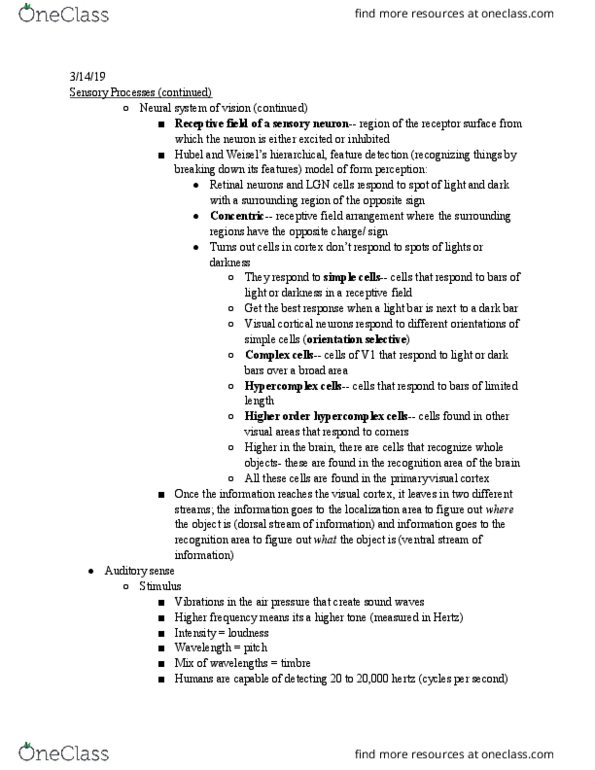PSYC 1100 Lecture Notes - Lecture 15: Color Vision, Rhodopsin, Retina
PSYC 1100 verified notes
15/30View all
Document Summary
Duplicity theory of vision-- mammals have two types of vision, one used in the day, one used in the night. Much convergence and divergence to bipolar cells. Little convergence and divergence to bipolar cells. Dark adaptation curve (rod cone break): when light intensity decreases, we eventually switch from cones to rods to see. People born without rods have low sensitivity (night blindness) Highest acuity in fovea: there are only cones in the fovea. Poor sensitivity in fovea: no rods in fovea-- you can only see a really dim star if you look away from it. Color can be seen in both peripheral and central vision (since there are cones in both regions) Absorbs best at about 510 nm (which is purple) Absorption of a photon breaks rhodopsin down into two components, opsin and retinal (the rhodopsin bleaches temporarily) Eventually the retinal and opsin combine back into a rhodopsin.





